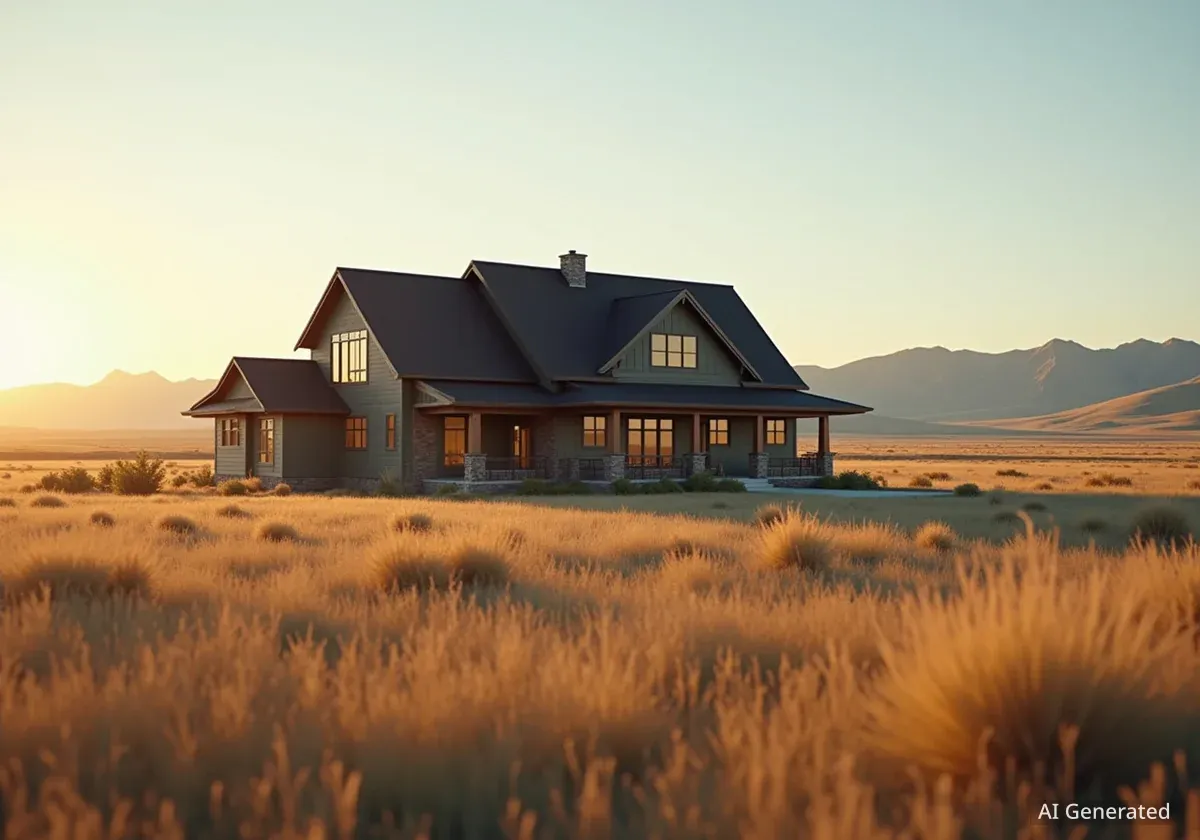Homeowners in Wyoming are navigating a moderate insurance landscape, with annual premiums placing the state in the middle-tier nationally. New data reveals that while costs are not as high as in coastal regions prone to hurricanes, they are influenced by increasing risks from severe weather and wildfires common in the Mountain West.
According to the U.S. Census Bureau, the typical Wyoming homeowner with a mortgage pays between $1,500 and $1,999 per year for insurance. This positions the state between its more affordable northern neighbors and the significantly more expensive market in Colorado.
Key Takeaways
- Wyoming homeowners with a mortgage typically pay $1,500 to $1,999 annually for insurance, while those without a mortgage pay $1,000 to $1,499.
- The state's insurance costs are comparable to Montana and the Dakotas but are lower than Colorado's average of $2,000 to $2,499 for mortgaged homes.
- Rising wildfire risk is a significant factor influencing insurance premiums across the Mountain West, including Wyoming.
- A national survey found 75% of Americans are concerned that homeowners insurance could soon become unaffordable, impacting home buying decisions.
A Detailed Look at Wyoming's Insurance Premiums
Data from the U.S. Census Bureau's American Community Survey provides a clear picture of what residents are paying for home insurance. The state has a total of 183,683 insured homeowner households, with 97,188 holding a mortgage and 86,495 owning their homes outright.
For the majority of households with a mortgage, annual premiums fall within the $1,500 to $1,999 range. Homeowners without a mortgage generally see lower costs, with a typical range of $1,000 to $1,499 per year.
Premium Distribution in Wyoming
While averages provide a general guideline, actual costs vary widely. Among homeowners with a mortgage, 9,188 pay $4,000 or more annually. For those without a mortgage, 5,266 fall into this high-cost category. Conversely, a small segment enjoys very low premiums, with 8,038 mortgaged owners and 17,543 non-mortgaged owners paying less than $100 per year.
How Wyoming Compares to its Neighbors
Wyoming's insurance market is best understood in a regional context. The state's premium range for mortgaged properties ($1,500–$1,999) is identical to that of Montana, North Dakota, and South Dakota. This suggests similar risk profiles and market conditions across the northern Great Plains and Rockies.
However, there are notable differences with other neighbors:
- Idaho: More affordable, with typical premiums for mortgaged homes between $1,000 and $1,499.
- Colorado: Significantly more expensive, with an average range of $2,000 to $2,499 for mortgaged households.
This data places Wyoming squarely in the middle of its immediate regional peers, more costly than Idaho but considerably less expensive than Colorado, where factors like population density and a larger number of properties in high-risk areas drive up costs.
The Growing Influence of Climate Risk
While Wyoming does not face the extreme insurance costs seen in states like Florida and Louisiana, climate-related risks are a growing concern. The 2025 Climate Risk Report highlights that the nation's highest premiums are concentrated in coastal areas exposed to hurricanes. For example, homeowners in Miami pay an average of $22,718 per year.
Wyoming is not listed among the metropolitan areas with the most severe insurance burdens. However, the report underscores the national threat of wildfires, a primary risk for the Mountain West.
National Wildfire Risk
Across the United States, an estimated 5.6% of homes, valued at a collective $3.2 trillion, face severe or extreme wildfire risk. A significant portion of this risk is concentrated in California and surrounding states. Wyoming's forested landscapes and dry summer conditions expose it to similar threats, which insurers are increasingly factoring into their pricing models.
Although Wyoming's smaller housing market helps keep its overall premiums lower than in Colorado, the underlying risk from wildfires and other severe weather events like hailstorms remains a key driver of insurance costs in the state.
A Nationwide Affordability Crisis
The issue of rising insurance costs is not unique to Wyoming; it is a challenge affecting homeowners across the country. A recent Insurance Affordability Report from Realtor.com revealed widespread concern among Americans.
"Seventy-five percent of Americans believe homeowners insurance could soon become unaffordable, while nearly half of respondents said they had already struggled with renewing or obtaining coverage," the report stated.
These rising costs are actively shaping the housing market. The survey found that nearly 30% of prospective buyers have altered their search to different areas specifically because of insurance concerns. Another quarter of buyers reported completely overhauling their home-buying strategies to account for high premiums.
Perhaps most concerning is the potential for homeowners to forego coverage altogether. The report indicated that 58% of homeowners would consider dropping their insurance if premiums became too high. This sentiment was particularly strong among younger buyers, who are more likely to take on such a risk.
Outlook for Wyoming Homeowners
Currently, Wyoming homeowners benefit from a relatively stable, mid-range insurance market. The state offers a more affordable alternative to its southern neighbor, Colorado, while remaining competitive with other states in the region.
However, the long-term outlook suggests potential challenges. As climate pressures intensify, the risks of wildfire and severe weather events across the Mountain West are expected to rise. This will likely lead to continued upward pressure on insurance premiums.
For residents, this means that while costs are manageable today, affordability could become a more significant issue in the coming years. Proactively comparing coverage options and understanding the specific risks to their property will be crucial for managing future expenses.





